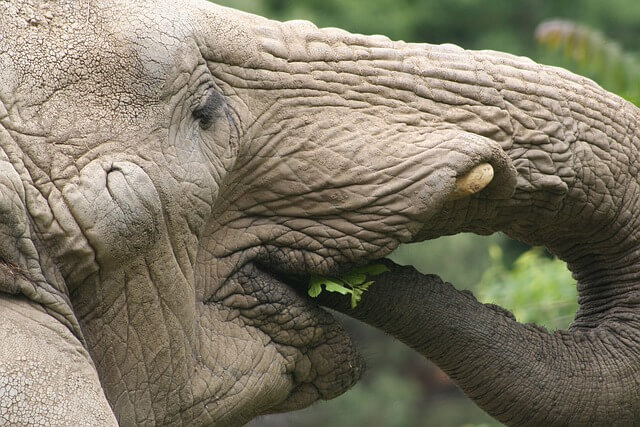In the savannas of Kenya, an elephant moves gracefully through the tall grass, its enormous presence almost at odds with the delicacy of its foraging. We all know that elephants are connoisseurs of the plant kingdom. However, discerning the specifics of their green palette is akin to decoding a botanical enigma.
An international research collaboration, including conservation biologists from Brown University, has now carefully and intricately analyzed the dining preferences of two elephant clans in Kenya. Employing avant-garde scientific tools, the study meticulously examined the elephants’ diets, down to the very types of plants consumed by each member of these grand behemoths. The resulting knowledge promises to be invaluable in comprehending the behavior and nutritional preferences of these iconic creatures, with ramifications for conservation strategies. The findings of this groundbreaking research were shared with the world in the Royal Society Open Science journal.
Tyler Kartzinel, one of the study’s authors and an assistant professor at Brown University, imparts wisdom on the significance of understanding the dietary needs of elephants. He articulates, “It’s really important for conservationists to keep in mind that when animals don’t get enough of the foods that they need, they may survive — but they may not prosper.” He adds, “By better understanding what each individual eats, we can better manage iconic species like elephants, rhinos and bison to ensure their populations can grow in sustainable ways.”
One of the critical tools employed by the researchers is DNA metabarcoding. Picture a detective with a magnifying glass, but instead of examining footprints, the scientists scrutinized DNA fragments in the elephants’ food. This cutting-edge technique enabled them to unravel the composition of the elephants’ diet by matching these DNA fragments to an extensive library of plant DNA barcodes.
Kartzinel remarked on the pioneering nature of this technique, saying, “This is the first use of DNA metabarcoding to answer a long-term question about social foraging ecology.” He further adds, “When I talk to non-ecologists, they are stunned to learn that we have never really had a clear picture of what all of these charismatic large mammals actually eat in nature. The reason is that these animals are difficult and dangerous to observe from up-close, they move long distances, they feed at night and in thick bush and a lot of the plants they feed on are quite small.”
The research team juxtaposed DNA metabarcoding with stable isotope analysis, a more traditional approach that involves chemical analysis of animal hair. Previous studies using stable isotope analysis by George Wittemyer at Colorado State University and Thure Cerling at the University of Utah had revealed that elephants alternate between feasting on fresh grasses during the rainy season and nibbling on trees in the dry season. But the chemical approach could not discern the specific types of plants the elephants favored.
This new study, however, elegantly employed DNA metabarcoding along with a battery of other techniques, including GPS tracking and remote sensing, to probe the gastronomic preferences of individual elephants. They found that, contrary to prior assumptions, the dining choices among individual elephants in the same group could vary dramatically, despite foraging together.
In the grand tapestry of wildlife ecology, this research helps resolve a perplexing question: How do social bonds among family groups maintain unity amidst the scarcity of resources? Kartzinel explains that elephants modulate their diets based on availability, individual predilections, and physiological requirements. For instance, a pregnant elephant may have distinct nutritional demands at different stages of gestation.
Kartzinel poetically observes, “Wildlife populations need access to diverse dietary resources to prosper. Each elephant needs variety, a little bit of spice — not literally in their food, but in their dietary habits.”
This study not only throws open the doors to the culinary world of the majestic elephants but also hands a golden chalice of knowledge to conservationists. To protect these magnificent creatures and ensure a thriving habitat, the key may lie in a pantry filled with a diverse assortment of plants.
Supported by the National Science Foundation, this research paves the way for further studies that could potentially revolutionize the conservation of not only elephants but a myriad of magnificent creatures that grace our planet.


